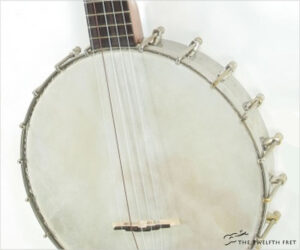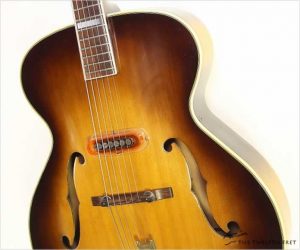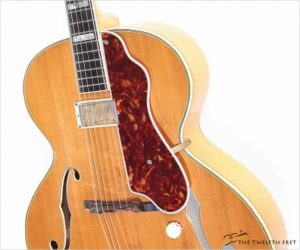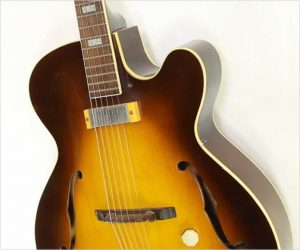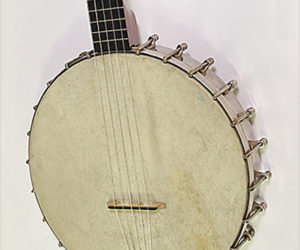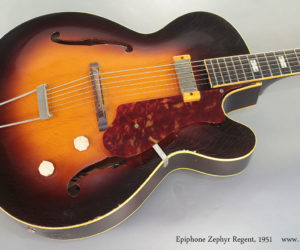Shown here is a lovely S S Stewart The Amateur Open Back Banjo, Grade 2 model, built around 1899 after Stewart’s death in April 1898. The ‘Grade 2’ designation means that it’s a more advanced model, not that it’s a second.
This fine open-back banjo features the original tailpiece, friction tuners, a period Rogers calf skin head and standard dowel stick adjuster system. This is one of the few of these banjos we’ve seen that have all the original finish, hardware, tension hooks and name plaque complete and in place. Apparently the original owner, a Mr. AL M. Dodgson, carved his initials into the dowel stick — no doubt a hundred years ago or more.
Vintage
Price: $750.00 CAD
This instrument has sold
MORE →
